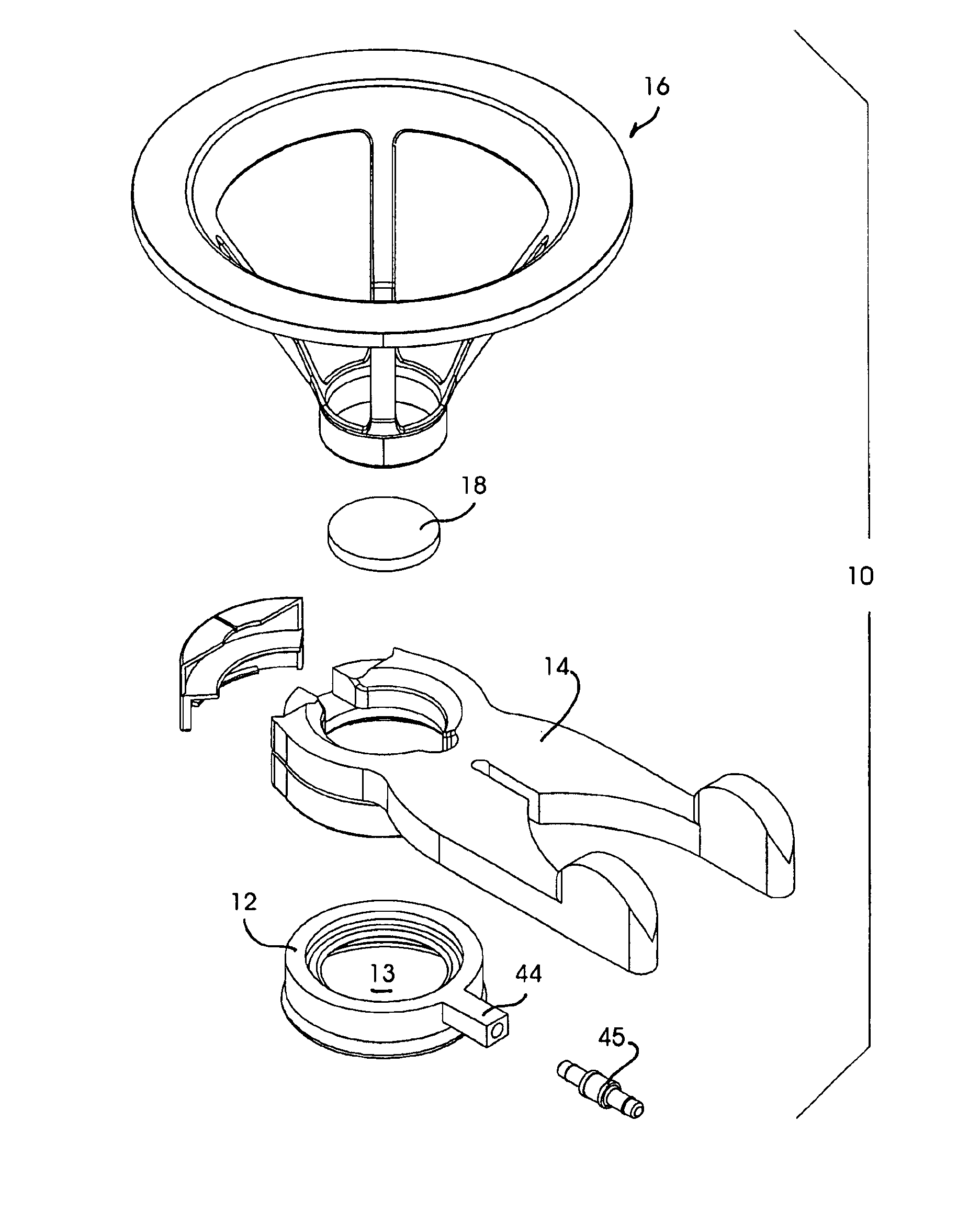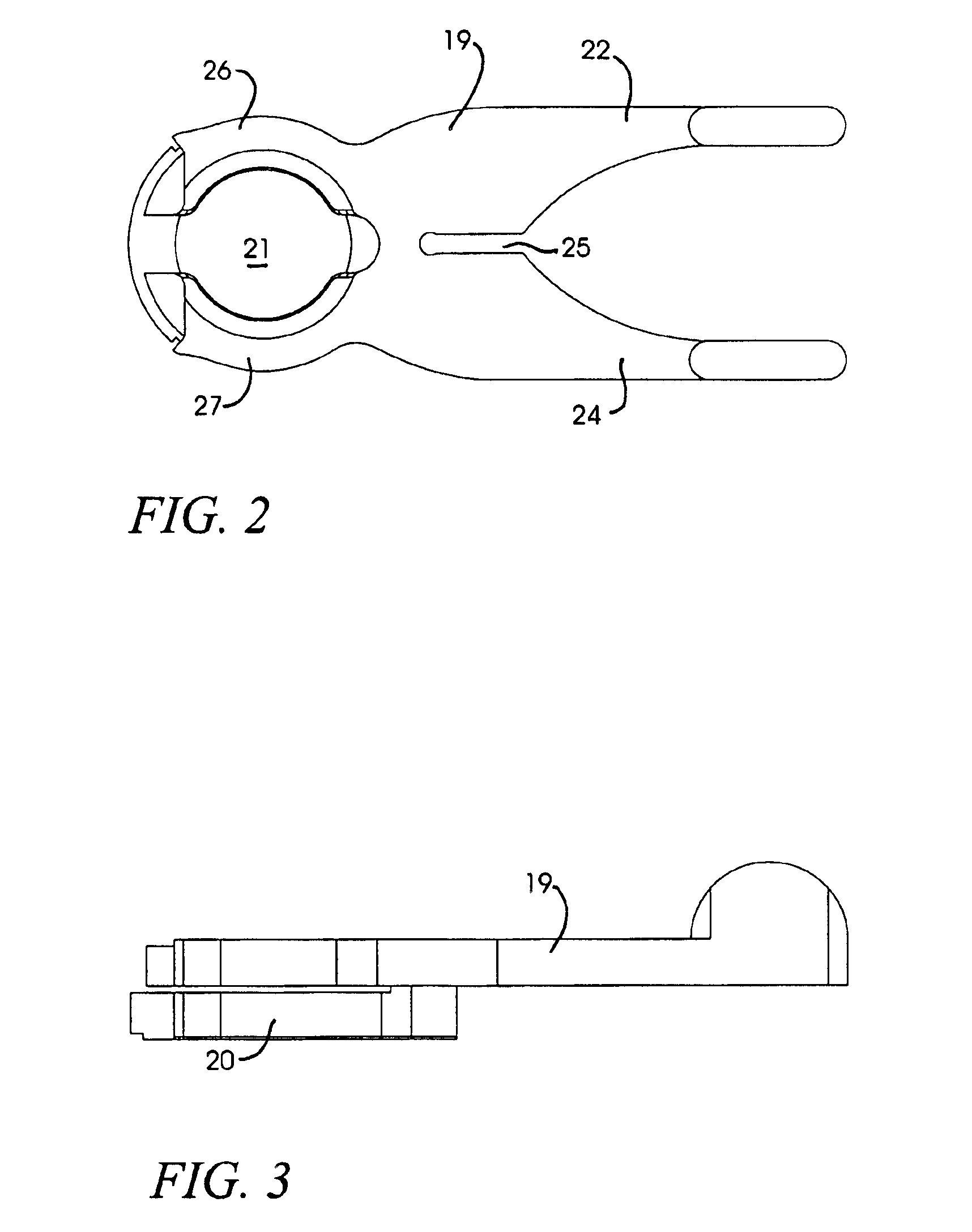Ocular fixation and stabilization device for ophthalmic surgical applications
a technology for ophthalmic surgery and stabilization devices, which is applied in the field of interface devices for ophthalmic laser surgery, can solve the problems of permanent damage to non-renewable tissue within the eye, affecting the patient's overall relative motion, and imposing the burden of minimizing relative motion on the patien
- Summary
- Abstract
- Description
- Claims
- Application Information
AI Technical Summary
Benefits of technology
Problems solved by technology
Method used
Image
Examples
Embodiment Construction
Conceptually, the present invention is directed to a mechanical apparatus that performs the functions of coupling the anterior surface of a target eye to a surgical laser and applanating said eye. The apparatus is termed mechanical because it directly couples the mechanical surface of an operative target, such as human corneal tissue, to a mechanical fixture of a surgical laser system, such as the distal tip of a laser beam's delivery system. Simply put, and in the context of a particular embodiment which will be described in greater detail below, the apparatus is affixed to the anterior surface of a human cornea and is affixed to the laser delivery system.
Referring initially to the exemplary embodiment of FIG. 1, an illustrative ocular fixation and applanation device is shown in an exploded, perspective view, and is generally indicated at 10. The ocular fixation and applanation device (referred to herein as simply an applanation device or alternatively, a patient interface) is an a...
PUM
 Login to View More
Login to View More Abstract
Description
Claims
Application Information
 Login to View More
Login to View More - R&D
- Intellectual Property
- Life Sciences
- Materials
- Tech Scout
- Unparalleled Data Quality
- Higher Quality Content
- 60% Fewer Hallucinations
Browse by: Latest US Patents, China's latest patents, Technical Efficacy Thesaurus, Application Domain, Technology Topic, Popular Technical Reports.
© 2025 PatSnap. All rights reserved.Legal|Privacy policy|Modern Slavery Act Transparency Statement|Sitemap|About US| Contact US: help@patsnap.com



